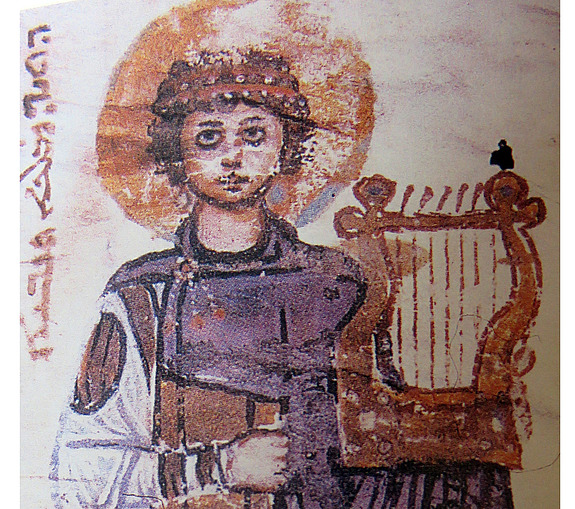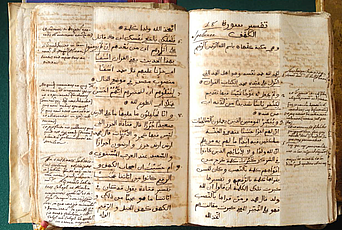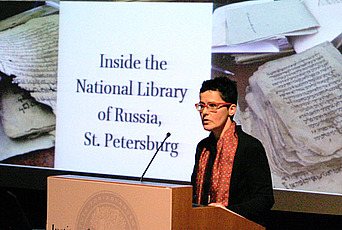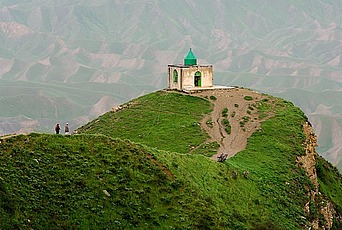For a Different History of the Seventh Century C.E.

An arcane topic to most people, Syriac sources help shed a more complex light on the history of the Middle East from late antiquity to the Middle Ages. They reveal a non-imperial epoch and its rich contributions to the cultural and religious history of the region.
Although Greek and Latin are familiar to all, Syriac—that form of Aramaic used in Northern Mesopotamia (in Edessa/modern Urfa in southeastern Turkey) as the cultural and religious language of Aramaic speakers—is almost entirely unknown to most, although it was the third major language of Christians (as well as some Jews in Edessa, polytheists, and Manicheans) from the second to the fourteenth century. It is still today the religious and classical language of the Eastern Christians from Turkey, Iran, Syria, Lebanon, Iraq, and southwest India, belonging to a variety of churches (Syrian Orthodox, Assyrian Church of the East, Chaldean, Melkite, and Maronite, to cite only the main ones). Increasingly, it serves as a lingua franca among the diaspora of displaced people fleeing conflicts in the region.
The origins of Syriac, and of its distinct spoken and written script, go back to the second century B.C.E., when it served as the official language of the city-state of Edessa (by its Greek Hellenistic name, or Urhoy in its Aramaic one). Thanks to its double stem—Mesopotamian/Aramaic and Greek—Syriac blossomed to become the literary language of Christians from the second century C.E. onwards. Although Edessa came under Roman control in the first century C.E. and Edessan Aramaic never again had the support of a state, it came to be used, under the name of Syriac, as a literary language by Christians in the Roman as well as the Iranian Empires. Syriac Christianity spread along the maritime and terrestrial trade roads from the Mediterranean all the way to South India (purportedly converted by Saint Thomas), and to Central Asia, Tibet, China, and Mongolia.
Transversal to universal empires, Syriac literature was produced by—and conversely sheds light on—communities living on the borders of the Near Eastern polities, considered as a religious minority in the Zoroastrian Empire of the Sasanians, as heretics in the eyes of the Byzantine Orthodox (since the “universal” councils of Ephesus in 421 and Chalcedon in 531 that they refused), and as one of the religions of the book under Islamic powers. Syriac thus offers a crucial “internal” source for the history of the Mesopotamian region reaching as far as South Arabia and the Far East from the late antique to the medieval era. It helps articulate notions of multilingualism, as well as local versus imperial idioms and identities.
The new trend that considers the Qurʾān as a late antique text has emphasized the role of Syriac as one of the textual and scriptural traditions that was a basis for the Qurʾānic text. Syriac was the liturgical and religious language of members of the Arab tribes who converted to Christianity all the way from Syria to Southern Arabia. It became primarily the language of the Miaphysite denomination (that emphasized the unity of Christ’s human and divine natures after incarnation in one nature—mia-physis in Greek) that was officially condemned by the Byzantine Church and Empire. This Miaphysite opposition became a fully independent church in the seventh and eighth centuries, the Syrian Orthodox Church, and professed having remained truly orthodox since the origins of Christianity, in contrast to the Byzantine Orthodox Church, which allegedly strayed from orthodoxy after the council of Chalcedon.
It is not only the Byzantine Orthodox, Syrian Orthodox, and Church of the East (another independent church in the Persian, Sasanian Empire) that were competing with each other in the sixth and seventh centuries trying to convert peoples and tribes, but also powerful Miaphysite groups deemed heretic by the mainstream Miaphysites. These religious controversies on complex matters of faith concerned not only the theologians who participated in the church councils, they also drew ecclesiastical, social, and amical networks of members of the different affiliations, among whom letters were exchanged across the whole Middle East. By the sixth century there thus emerged a commonwealth of primarily Miaphysite groups and states (in Syria, Arabia, Egypt, and Ethiopia, notably) that shared not only the same religious ideas but also a certain understanding of imperial kingship.
It is in reading a letter from the well-known Syriac bishop and theologian Philoxenus of Mabbug (Hierapolis in ancient Syria) to a stratelates of al-Ḥīra (a Byzantine title for an official based in one of the “capital” camps/cities of the Arabs in pre-Islamic late antiquity, and today in Iraq) that I came see the link these sources provide between Syriac theology and the Qurʾān. This letter discusses the presence in Arabia of groups among the Miaphysites that were considered as heretics. Called Julianists (on the name of Julian of Halicarnassus, d. 527) or Aphthartodocetae, they understood the alliance of the divine and human natures in Christ in a way that made them question Jesus’s suffering on the cross. In the 520s, a large group of Julianists took refuge against Byzantine persecutions in al-Ḥīra and in Upper Egypt. Some subsequently fled to Ethiopia and on to Arabia. These groups had an enduring presence until at least the eighth century in Southern Arabia where many churches belonged to them.
What this Syriac letter highlights are the discussions that were taking place in the Christian milieu in Arabia in the sixth century, barely a century before Islam, on issues close to those alluded to in the Qurʾān. An obscure passage of Surat al-nisāʾ 4, 157 about Jesus’s crucifixion suggests that it was a matter of controversy and that nobody was sure about what happened then. It gave way to many subsequent interrogations: was it only a fantasy, an appearance of Jesus that was crucified by the Jews? Was it someone else, and were there two persons? The discussions of these very subjects between the dissident and mainstream Miaphysites in Arabia before Islam can explain the basis on which the Qurʾān expressed its own puzzlement about what exactly happened on the cross, and from there how the Islamic tradition tried to make sense of the obscure Qurʾānic passage.
More broadly, Syriac sources put a different emphasis on the events of the seventh century than the Byzantine and the later Arabic ones. To take only one example, the capture of Jerusalem by the Sasanians in 614 after a dramatic siege is mentioned in Syriac sources as in Greek and Arabic, but in the former the interest lies in the coming of the True Cross to the Sasanian Empire. Instead of seeing the displacement of the sacred palladium of the Christian Roman Empire in a black light, Syriac sources, particularly the Eastern ones, produced in the Iranian Empire, were more interested in taking notice of the people who were in charge of sending it to Persia and then bringing it back to Emperor Heraclius. They viewed in a more positive way its coming to Seleucia-Ctesiphon, the capital city of the Sasanians, than did their Greek counterparts, since it meant that it was now in the empire where they lived.
The non-imperial Christian communities were less affected by the events than the Byzantine Orthodox, who interpreted the events as a sign of God having abandoned them. Instead of celebrating the Byzantine Emperor Heraclius as the savior of Christianity when he eventually returned the True Cross to Jerusalem, they produced counter-propaganda in the form of apocalypses where they expected a last emperor of their own, a Syrian Greek king, descending from Alexander the Great to be the one who at the end of times would triumph over their enemies and remit all earthly power to God.
It is striking to see that the second capture of Jerusalem in 636 by the Arabs, only a few years after its retaking by Heraclius, is hardly mentioned in the Syriac chronicles where it is a non-event. Since the siege ended peacefully, after a negotiation between the Byzantine patriarch of Jerusalem and the caliph, and the city was not stormed by the Arab troops, the capture of the city is not mentioned in the most ancient Syriac sources.
Produced by the communities who were at the heart of the events, Syriac sources compel us to reconsider what “conquests” means. Modern historians talk about the Sasanian and then Arab-Muslim conquests, but Syriac sources never use the word or concept. There were sieges, battles, military operations that could be catastrophic and dramatic for the local populations, but there were also negotiations and cities taken by treaty. Contrary to Arab-Muslim sources that would subsequently create the genre of “futuh,” or “conquest” literature, in order to celebrate those who took part in the campaigns and the distribution of the booty, Syriac sources present a situation of occupation and change of rulership more than a conquest as such. They invite us thus to reconsider the categories, and the agendas, that we have inherited from later Arab-Muslim sources.
* I am very grateful to Thomas Dodman (Member at IAS, School of Historical Studies) who kindly agreed to correct the English of this paper. All remaining errors are mine.


